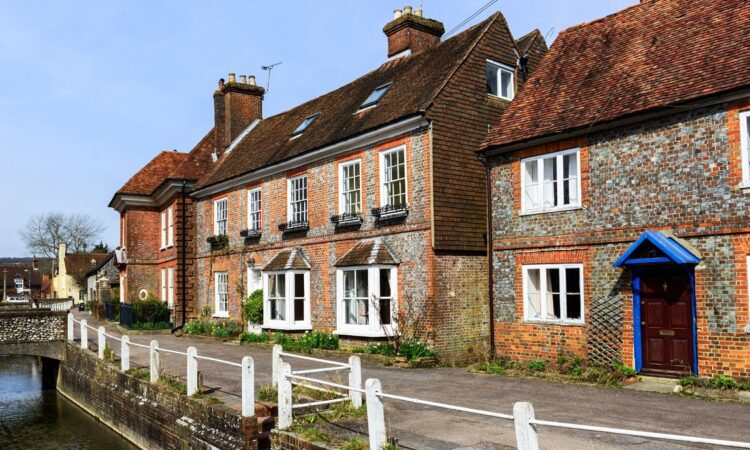
Higher mortgage costs stall buyer demand in March in the UK housing market but annual growth remains on the rise.
UK house prices fell by 0.2% between February and March, according to a survey released on Tuesday by Nationwide Building Society.
The drop comes after a 0.7% rise recorded in both February and January, although this month’s reading shows a 1.6% annual jump.
The average cost of a home is now £261,142 (€305,648), still 4.6% below the peak recorded in late 2022.
During the final months of last year, after the Bank of England decided to hold the base interest rate at 5.25% in September, house prices began to climb in the UK.
This prompted banks to cut mortgage rates in January, amid hopes of an early interest rate fall, but lending costs are again on the rise.
“Mortgage rates started to pick up again in February and March as it became clear that the central bank was in no rush to start cutting interest rates, which are still stuck at more than 15-year highs,” said Victoria Scholar, head of investment at interactive investor.
“This has pushed individuals and families away from the sales market towards the lettings market instead where rental costs have been rising at a record pace,” she added.
The average rate for a UK five-year mortgage deal passed 6% last summer.
Moneyfacts says this figure is now at 5.4%, up from a dip of 5.2% in January.
“We’re still a long way from the kind of bounce sellers were hoping for in the spring,” said Sarah Coles, head of personal finance at Hargreaves Lansdown.
“Mortgage approval levels are still around 15% lower than before the pandemic. When you consider how many new For Sale signs have been going up around the country, it means sellers may still struggle to shift their properties.”
Despite a national downturn, house price growth was more promising in a number of more affordable regions.
Northern Ireland saw a 4.6% annual rise in house prices, while the North of England saw a 1.7% increase.
Analysts are also expecting wider growth in the UK housing market over the coming months.
Income growth continues to outpace house price growth, which will bolster demand, while easing inflation is steadily helping consumers with cost-of-living pressures.




